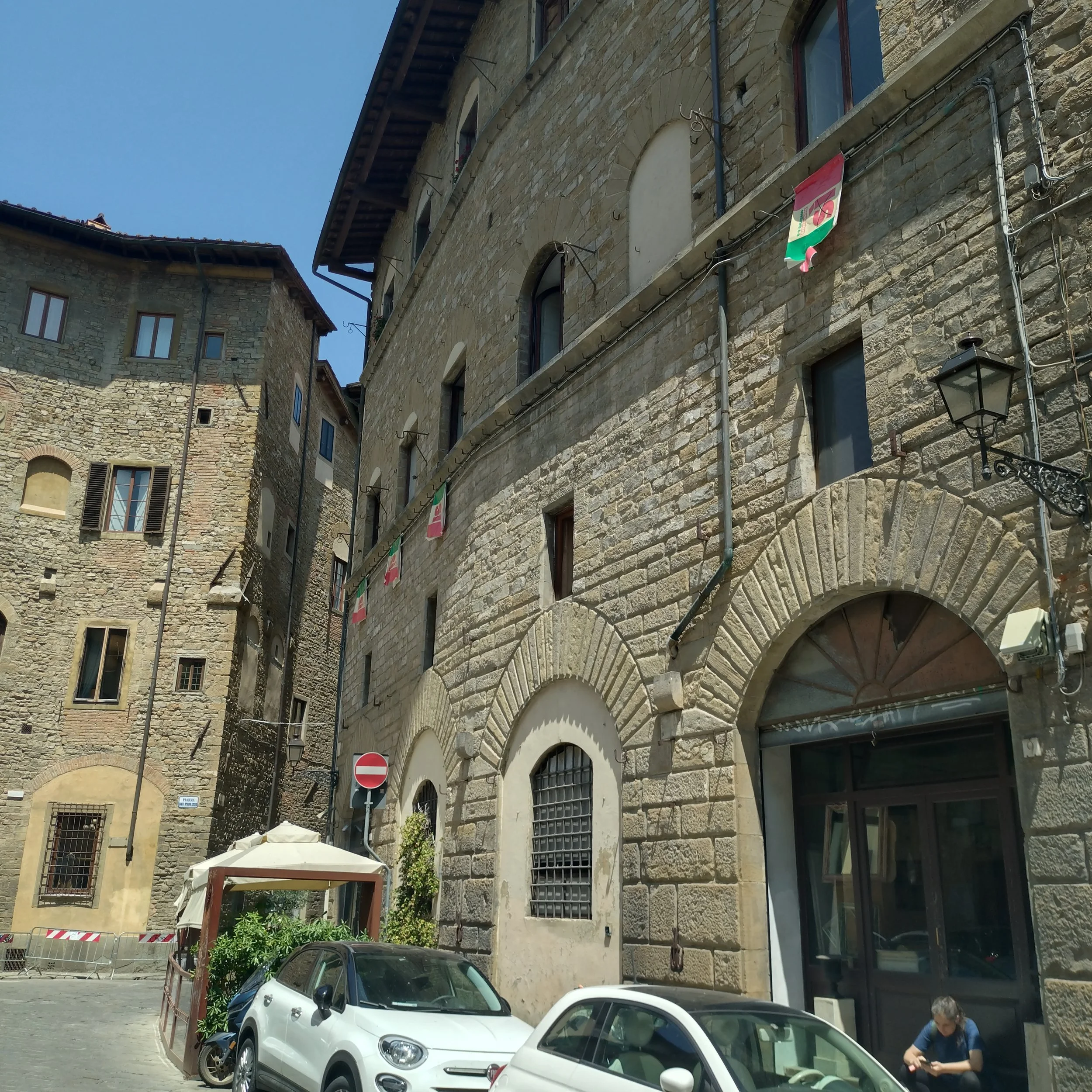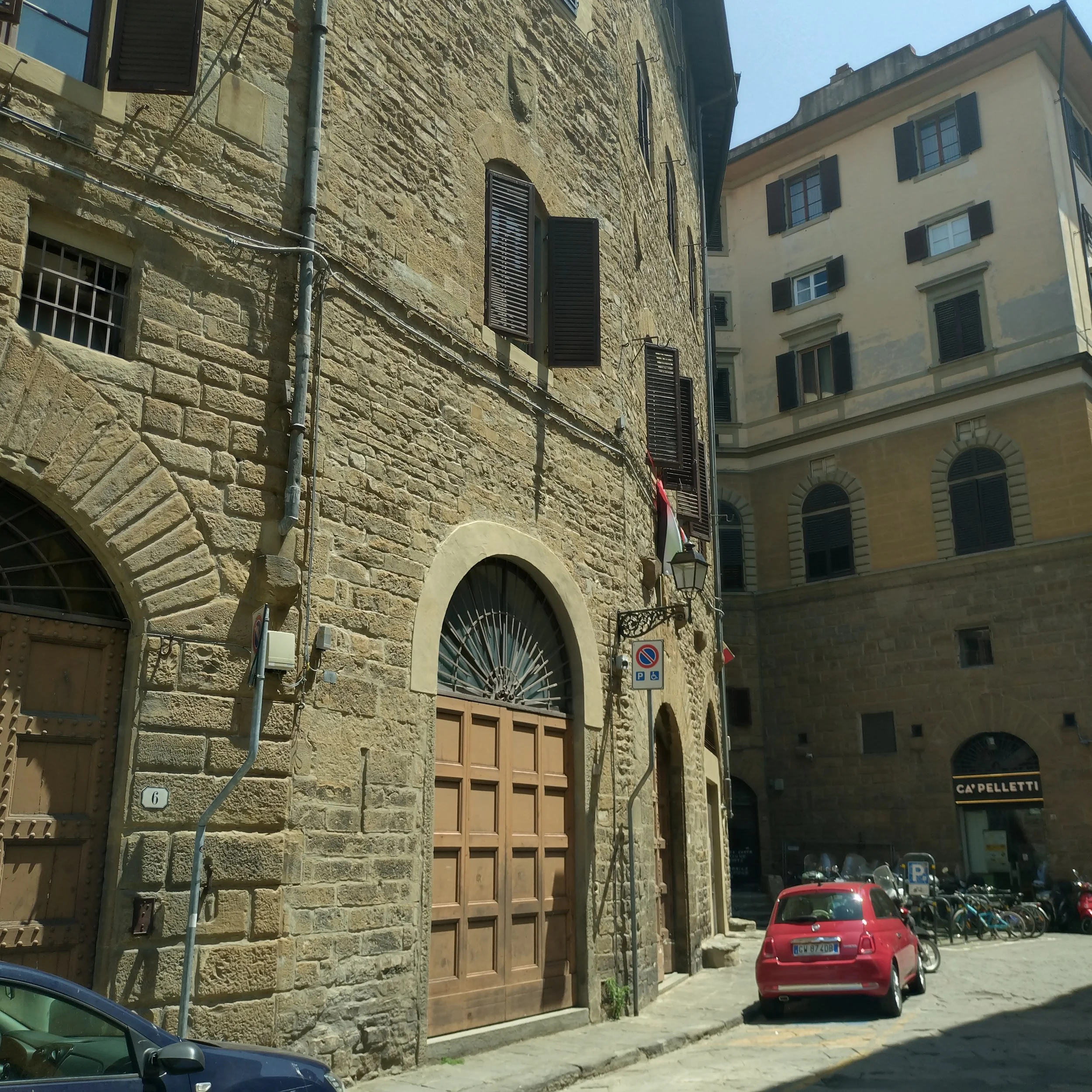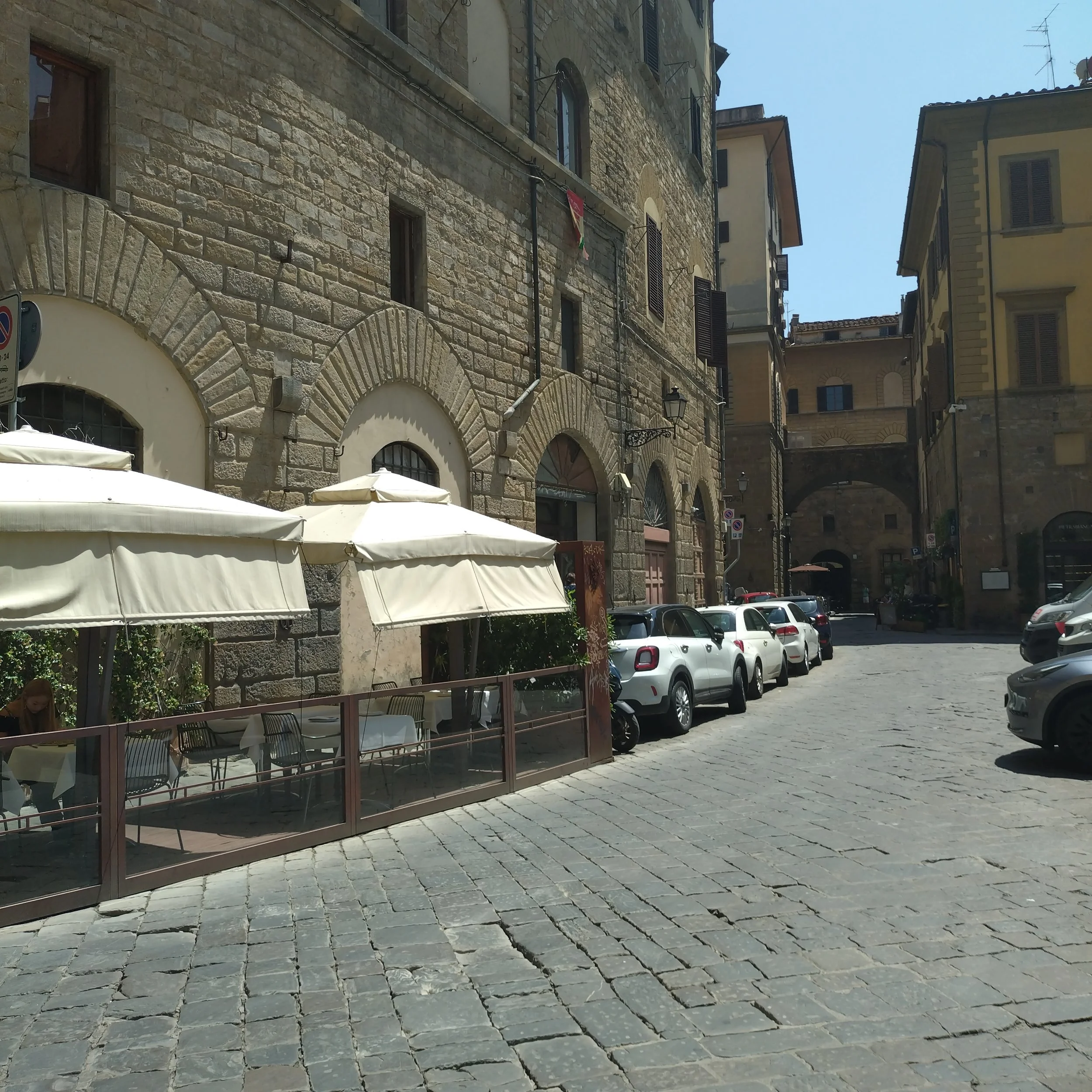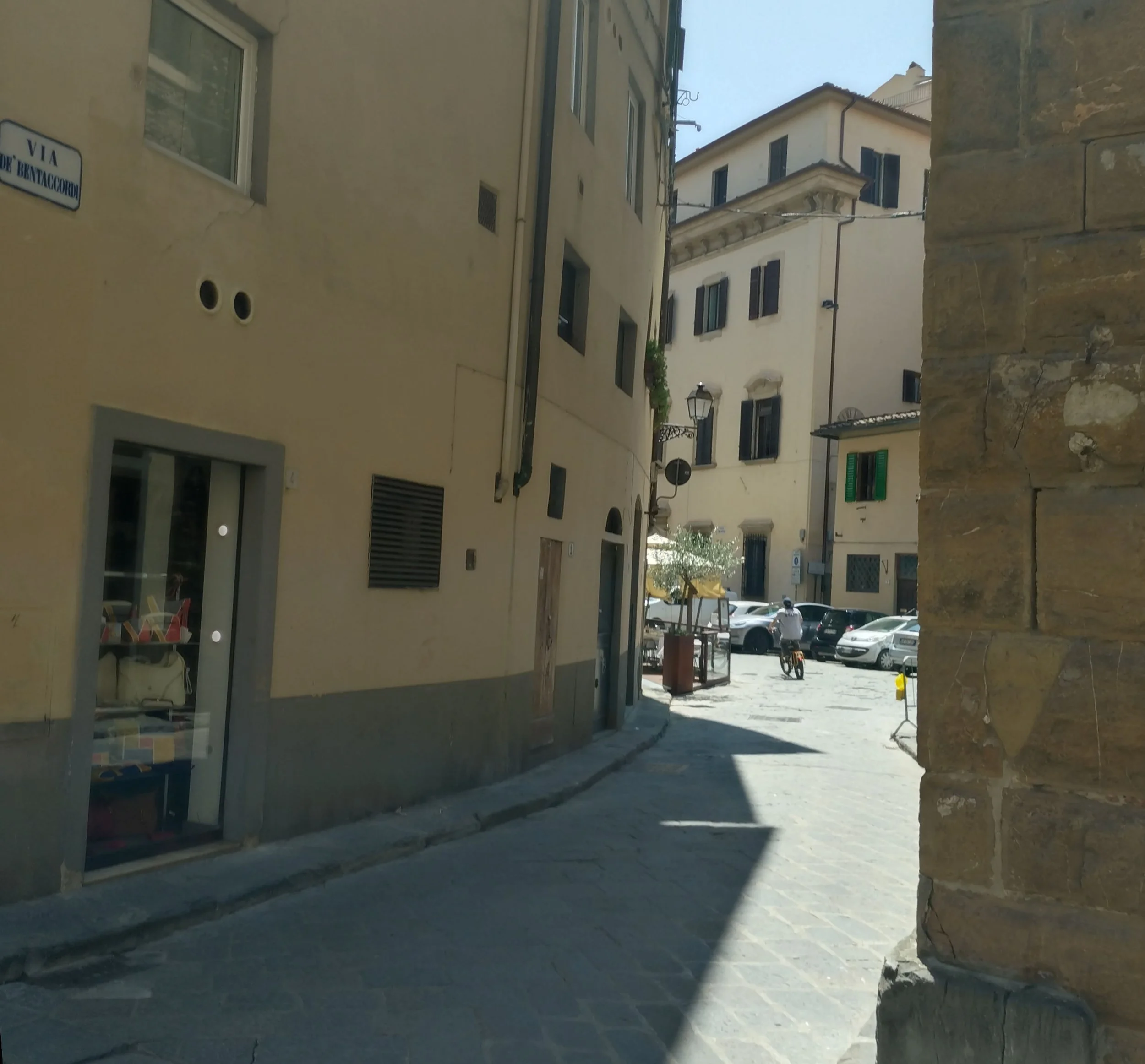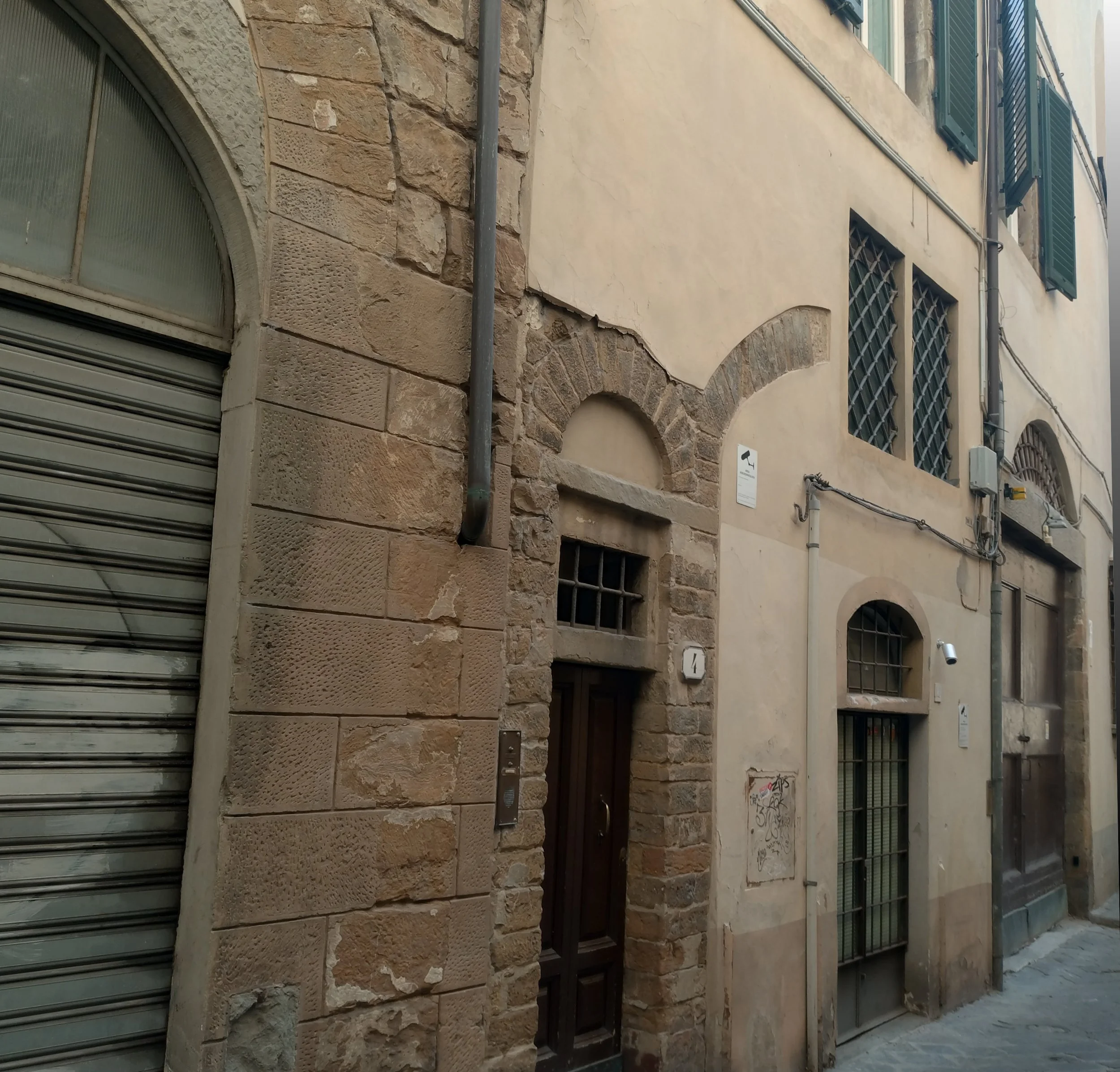XLVI Florence (Florentia)
What3words – averts.parks.supple
Capacity - 20,000
Visited June 2025
Status – A fossilised trace of a great amphitheatre, hidden amidst the bridges, domes and piazzas of the World Heritage Site.
“The view presented is taken from a photograph of the ruins that emerged in 1884 during the construction of the drainage system in Borgo dei Greci. The wall found in place probably belonged to the enclosure of the arena".”
So to another Unesco World Heritage Site, which rose on Etruscan and Roman foundations… Firenze, Florence, formerly Colonia Florentia. Such is the wealth of artistry and architecture in this city that its pre-Renaissance story unsurprisingly rarely gets a mention. Like Naples, the vastness and extent of human habitation, and what has since been built, have concealed what remains of the Roman Amphitheatre beneath its streets. What is known of it remains buried, and celebrated in a few exhibits in the Museum of Archaeology. The many visitors making their way from the markets and hotels east of the city centre passing through the Piazza Santa Croce en route to the Uffizi, Ponte Vecchio and the Cathedral of Santa Maria will unwittingly walk right through it without realising – unless they happen to be subconsciously distracted by the odd curves of the Via Torta or the Piazza Dei Peruzzi.
The Palazzo Vecchio sits on the site of a theatre which formed the south-east corner of the walled city. A short distance to the east was the great Amphitheatre. There are bits of it in cellars and walls, none accessible to the public, and it appears the last time anyone did any serious digging in the vicinity was in 1884-86 when a sewer was laid in the Borgo Dei Greci. The arch and section of arena wall uncovered were taken to the Museum. Remains found on site were used to assign a first century construction date. From the street, when you know what is there, the sense of being next to an Amphitheatre is powerful and evident. The curved buildings in Piazza Dei Peruzzi, Via Dei Bentaccordi and Via Torta follow its outer lines, bulk and height.
Not wishing to beat you over the head with the ‘Fossil’ analogy but the Florence amphitheatre really is just like a Dorset ammonite. It is substantially no longer present, but the detailed form has been preserved and colonised by later materials. There are thousands of reasons to visit Florence, and the city authorities have no need or inclination to boost its attractions by pulling down buildings and digging up bits of ancient Rome. So for now, it will remain beneath the streets with hints of a ghostly presence above.
"A large part of this monument survives in the body of the casing that occupied the site in the underground area, with the foundations intact. When in 1886, for the construction of the drainage system in Borgo dei Greci and the corridor running under the first maenianum, an elongated axe was found under the glazed flooring of the corridor, which prompted Professor Milani to assign the foundation of the monument to the last times of Silla, 89 and 45 BC."
